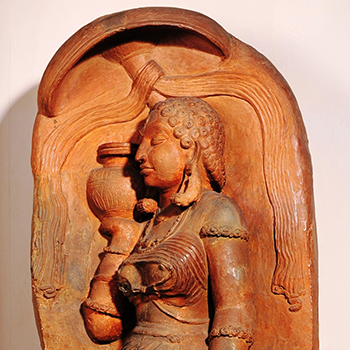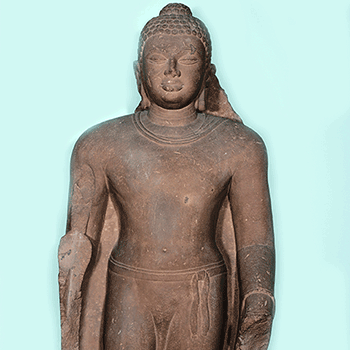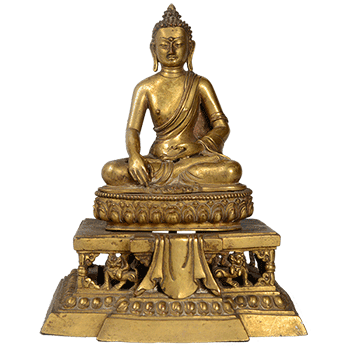This life-size sculpture of Ganga belongs to the Gupta period and dates back to 5CE. It finds its origin in Ahichchhatra, Bareilly, Uttar Pradesh. It is 172 cm in height, 74 cm in width and 40 cm in depth. This sculpture is currently on display in the Early Medieval Gallery within the National Museum, New Delhi.























